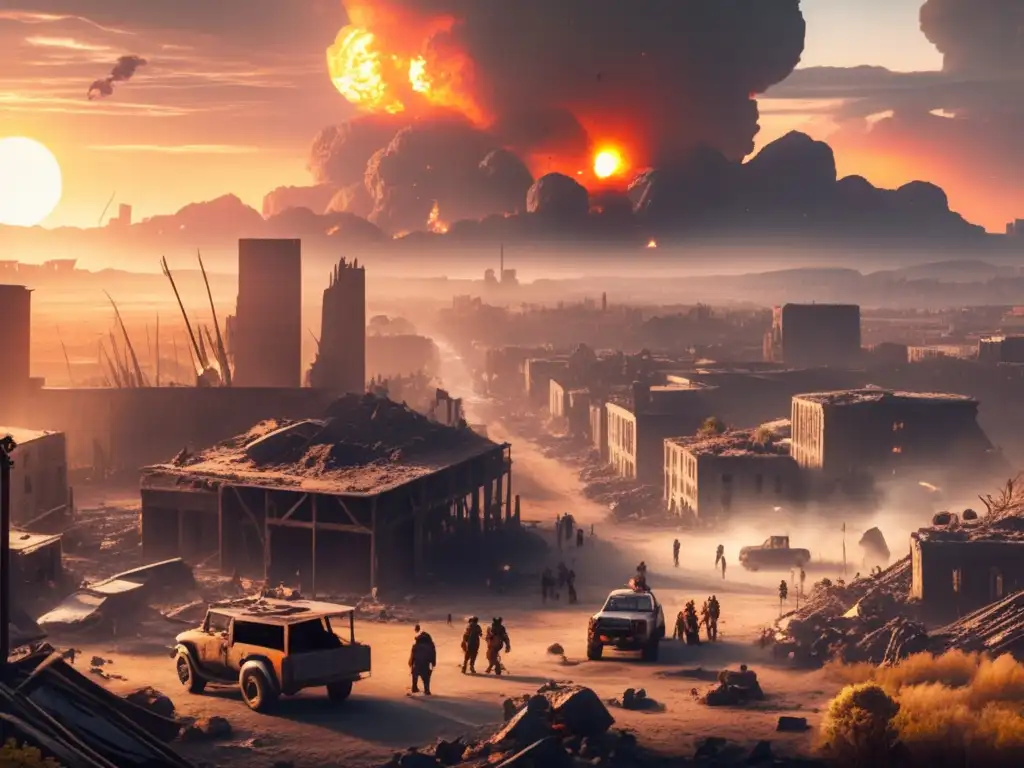When The Dust Settles: Recovery After Asteroid Strikes

Introduction
Asteroids are fascinating celestial bodies that have captured our attention for centuries. While they offer insight into the history of our solar system, they also pose a potential threat to our planet if they were to collide with Earth. Despite the rarity of asteroid strikes, their impact can be catastrophic. In this article, we will explore what happens after an asteroid strike and how recovery efforts take place.
The Impact of an Asteroid Strike

The Immediate Aftermath
An asteroid strike can vary in intensity and impact depending on its size and location. Regardless of the magnitude, the immediate aftermath of the event is chaotic and devastating. The impact creates a shockwave that causes the ground to shake, buildings to collapse, and fires to ignite. The resulting dust and debris cloud can block out the sun for weeks or even months.
Long-Term Effects on the Environment
After the initial chaos subsides, the long-term effects of an asteroid strike become apparent. The environmental impact is significant, with changes to the landscape, climate, and ecosystems. The impact site is often left with a large crater that can span miles in diameter. This can lead to changes in topography, including the creation of new lakes and rivers. The environmental changes can also trigger mass extinction events by disrupting the food chain, and altering temperature and precipitation patterns.
Impact on Human Life
An asteroid strike has a significant impact on human life, with thousands of casualties and widespread destruction. The recovery process is challenging and can take years to complete. The immediate priority is to provide medical care to those injured and displaced by the event. The infrastructure, including power, water, and transportation systems, also needs to be restored.
Recovery Efforts after an Asteroid Strike

Assessment and Evaluation
The first step in the recovery process is to assess and evaluate the damage caused by the asteroid strike. This involves determining the extent of the impact, the number of casualties, and the condition of the infrastructure. The assessment helps in prioritizing the recovery efforts and allocating resources accordingly.
Restoration of Infrastructure
The restoration of infrastructure is a critical component of the recovery process. Communication and transportation systems need to be restored quickly to enable rescue and recovery efforts. Power and water systems also need to be brought back online to provide basic necessities to those affected by the event.
Clean-up and Debris Removal
Removing the debris and cleaning up the impact site is another significant challenge in the recovery process. Large pieces of debris and rubble block roads and can pose a threat to public safety. The debris removal process often involves heavy machinery and specialized equipment, making it a time-consuming task.
Environmental Remediation
Environmental remediation is a long-term process that focuses on repairing the damage to the ecosystem caused by the asteroid strike. This involves reforestation, wildlife conservation, and soil remediation. The goal is to restore the ecosystem to its pre-impact state as much as possible.
Frequently Asked Questions

-
What happens to the environment after an asteroid strike?
The environmental impact is significant, with changes to the landscape, climate, and ecosystems. This can lead to changes in topography, including the creation of new lakes and rivers. Environmental changes can trigger mass extinction events by disrupting the food chain and altering temperature and precipitation patterns.
-
How long does it take to recover from an asteroid strike?
The recovery process can take years to complete. The immediate priority is to provide medical care to those injured and displaced by the event. Infrastructure, including power, water, and transportation systems, also needs to be restored.
-
What is environmental remediation?
Environmental remediation is a long-term process that focuses on repairing the damage to the ecosystem caused by the asteroid strike. This involves reforestation, wildlife conservation, and soil remediation. The goal is to restore the ecosystem to its pre-impact state as much as possible.
-
Can we prevent asteroid strikes?
While it is challenging to prevent asteroid strikes entirely, measures such as asteroid detection and deflection are currently being explored as potential solutions.
-
What can we learn from an asteroid strike?
An asteroid strike offers insight into the history of our solar system and provides data on how to mitigate future impact events. By studying artifacts created during an asteroid strike, scientists can better understand the composition and behavior of asteroids.
Conclusion
When an asteroid strikes Earth, its impact can be catastrophic, causing widespread destruction and loss of life. Recovery efforts after an asteroid strike require a coordinated and sustained effort to restore infrastructure, provide medical care, and remediate the environmental damage. While asteroid strikes pose a significant threat to our planet, they also offer insight into the history of our solar system and provide data that can aid in mitigating future impact events.
Thank you for reading this article. We encourage you to share your thoughts and questions in the comments section below and to subscribe to www.asteroidrealm.com to stay updated on the latest developments related to asteroids.
Additional Resources

For more information on asteroid impacts and recovery efforts, please visit the following resources:
- NASA Planetary Defense Coordination Office
- United Nations Office for Outer Space Affairs - Asteroids and Comets
- The Geological Society of America - Environmental Effects of Impact Events
 Cosmic Calamities: Understanding Asteroid Impact Consequences
Cosmic Calamities: Understanding Asteroid Impact Consequences Bracing For Impact: The Potential For Future Asteroid Strikes
Bracing For Impact: The Potential For Future Asteroid Strikes Impacts In Ice: Tracing Ancient Asteroid Strikes In Antarctica
Impacts In Ice: Tracing Ancient Asteroid Strikes In AntarcticaIf you want to discover more articles similar to When The Dust Settles: Recovery After Asteroid Strikes, you can visit the Asteroid Impacts category.
Leave a Reply

Articulos relacionados: